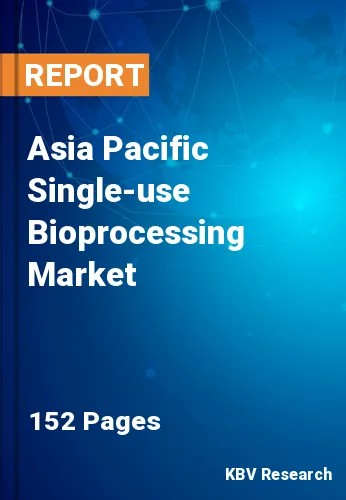The Asia Pacific Single-use Bioprocessing Market would witness market growth of 16.5% CAGR during the forecast period (2022-2028).
Cross-contamination of products is a significant issue in the healthcare sector. When multiple monoclonal antibodies or proteins are produced using the same process equipment, there is a risk of cross-contamination. Unwanted protein contamination may lower production yields by necessitating additional purification stages, or in the worst scenario, proteins that co-purify may result in treatments that could be lethal.
When adopting single-use systems, the risk of product cross-contamination between batches is essentially reduced because the product flow path is discarded and replaced after every batch. To improve their market position, the major players in the business are aggressively pursuing merger and acquisition tactics. A number of small and medium-sized companies have been acquired recently by players looking to increase their market position or break into the single-use bioprocessing industry.
Access, coverage, as well as the quality of medical care, can differ significantly not only between countries in Southeast Asia but even within individual nations due to the region's immensely complex and varied healthcare systems. There is an urgent need for the Asia Pacific region to look ahead to a common future challenge of the growing burden of ageing populations, which is driven by falling birth rates and increasing life expectancy. Despite disparities in capacity and competence to respond to current healthcare concerns, the region must urgently look ahead to this challenge.
The China market dominated the Asia Pacific Single-use Bioprocessing Market by Country in 2021, and would continue to be a dominant market till 2028; thereby, achieving a market value of $4,027.4 million by 2028. The Japan market is estimated to grow a CAGR of 15.8% during (2022 - 2028). Additionally, The India market would experience a CAGR of 17.2% during (2022 - 2028).
Based on Product, the market is segmented into Simple & Peripheral Elements (Tubing, Filters, Connectors, & Transfer Systems, Bags, Sampling Systems, Probes & Sensors [pH Sensor, Oxygen Sensor & Pressure Sensors, Temperature Sensors & Conductivity Sensors, Flow Sensors, and Others], and Others), Apparatus & Plants (Mixing, Storage, & Filling Systems, Bioreactors & Filtration System, Chromatography Systems & Pumps, and Others), and Work Equipment. Based on End-Use, the market is segmented into Biopharmaceutical Manufacturers and Academic & Clinical Research Institutes. Based on Workflow, the market is segmented into Upstream Bioprocessing, Fermentation, and Downstream Bioprocessing. Based on countries, the market is segmented into China, Japan, India, South Korea, Singapore, Malaysia, and Rest of Asia Pacific.
Free Valuable Insights: The Worldwide Single-use Bioprocessing Market is Projected to reach USD 53.8 Billion by 2028, at a CAGR of 16%
The market research report covers the analysis of key stake holders of the market. Key companies profiled in the report include 3M Company, Boehringer Ingelheim International GmbH, Corning Incorporated, Danaher Corporation, Eppendorf SE, Merck Millipore (Merck KGaA), Entegris, Inc., Sartorius Stedim Biotech S.A. (Sartorius AG), Thermo Fisher Scientific, Inc., and Avantor, Inc.
By Product
By End-use
By Workflow
By Country
Our team of dedicated experts can provide you with attractive expansion opportunities for your business.

